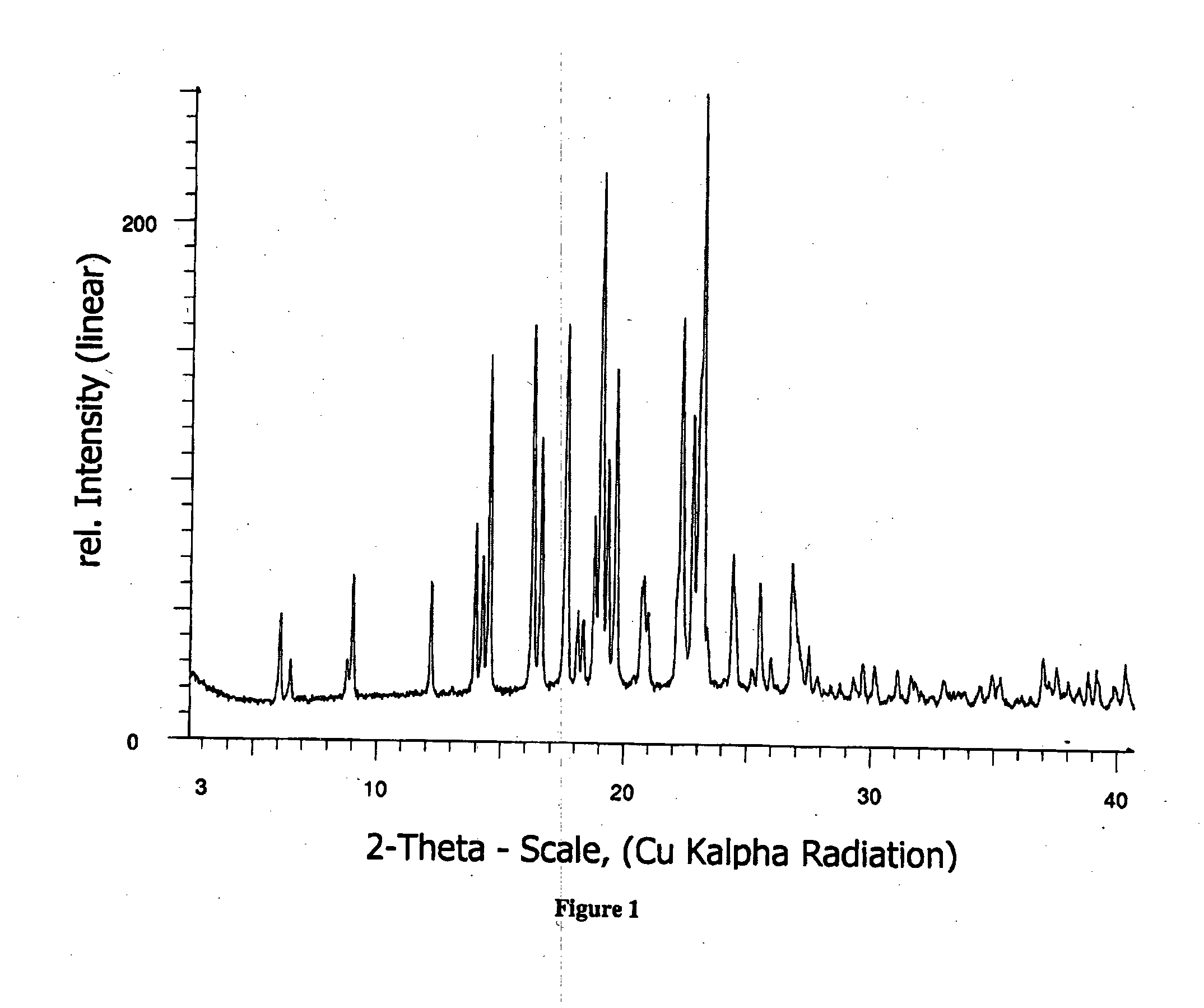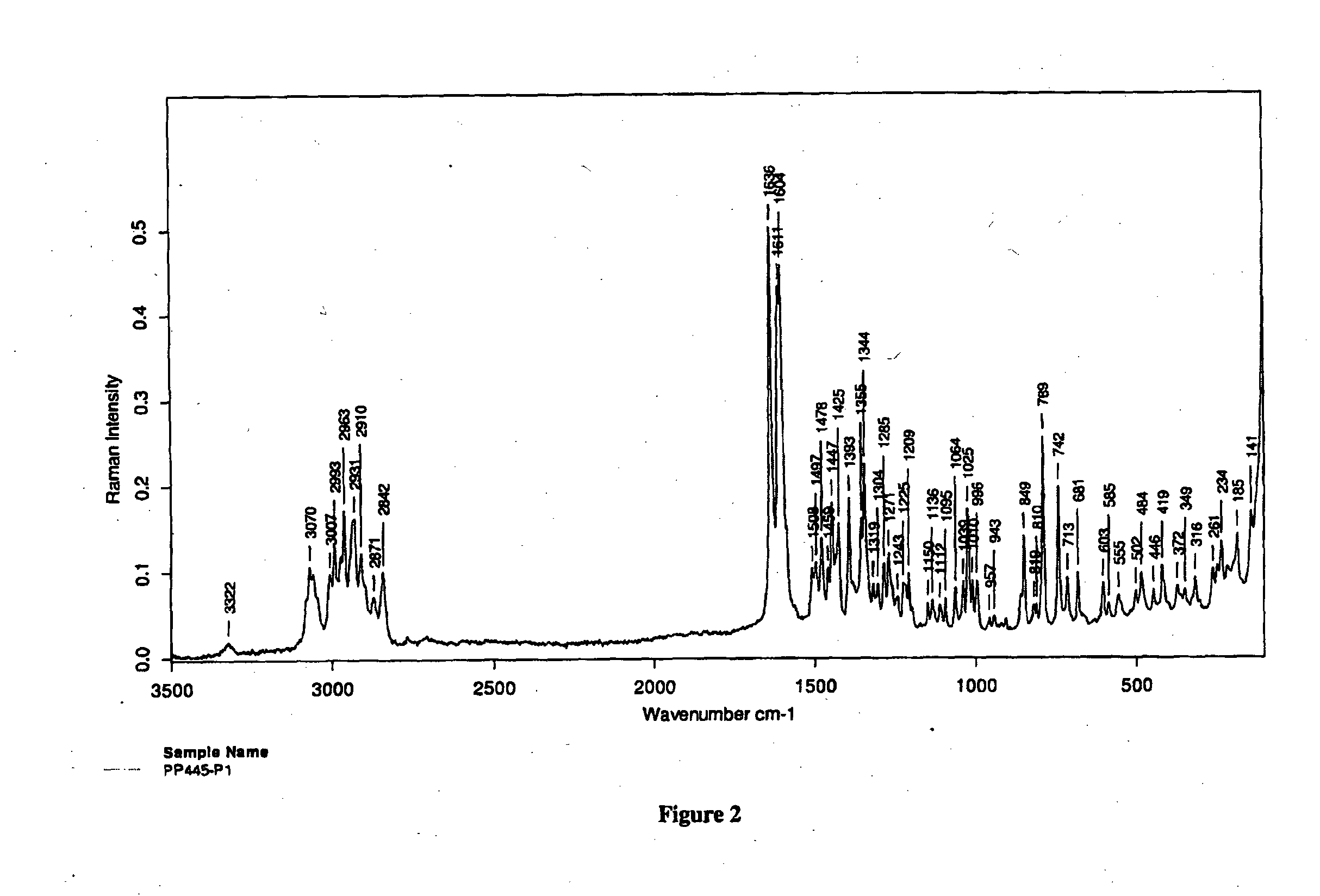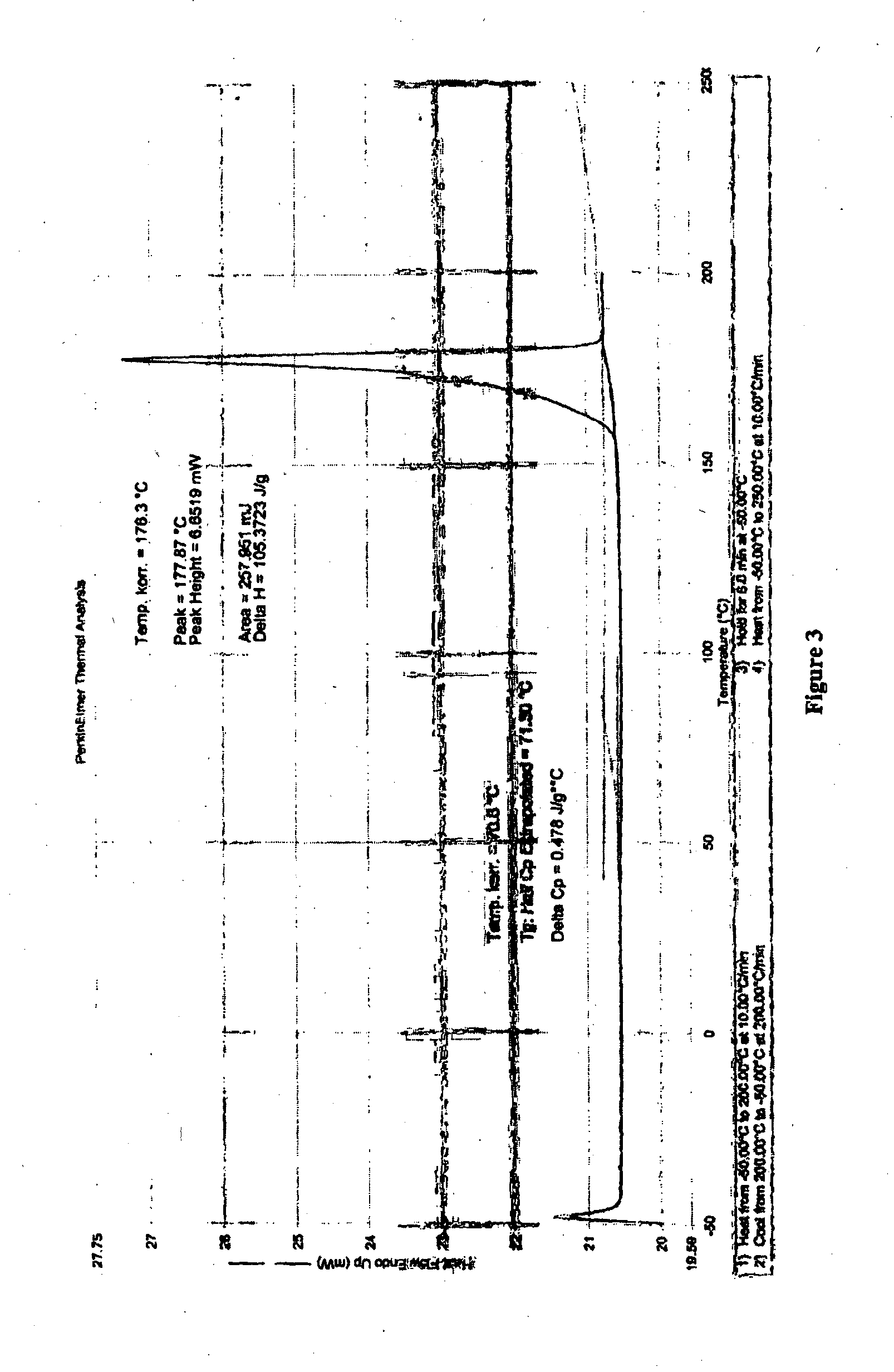A crystalline form of an anxiolytic compound
an anxiolytic compound and compound technology, applied in the field of crystallized form of anxiolytic compound, can solve the problems of undesired polymorphs and even toxicities, and achieve the effects of improving overall therapy, delay or minimize one or more symptoms, and reducing the risk of side effects
- Summary
- Abstract
- Description
- Claims
- Application Information
AI Technical Summary
Benefits of technology
Problems solved by technology
Method used
Image
Examples
example 1
General Methods of Instrumental Measurements
[0161]FT-Raman Spectroscopy.
[0162]Bruker RFS100 with OPUS 6.5 software or Multi-RAM with OPUS 7.0 software; Nd:YAG 1064-nm excitation, Ge detector, 3500-100 cm−1 range; typical measurement conditions: 50-300 mW nominal laser power, 64-128 scans, 2 cm−1 resolution.
[0163]XRPD.
[0164]Bruker D8; reflection geometry, Bragg-Brentano; Cu-Kα radiation, 40 kV / 40 mA; variable divergence slit; LynxEye detector with 3° window; 0.02° 2θ step size; 37 s step time. The samples were rotated during the measurement. Sample preparation: The samples were generally prepared without any special treatment other than the application of slight pressure to get a flat surface. Silicon single crystal sample holder, 0.1 mm deep.
[0165]1H-NMR.
[0166]Bruker DPX300 spectrometer; proton frequency of 300.13 MHz; 30° excitation pulse; recycle delay of 1 s; accumulation of 16 scans; deuterated DMSO as the solvent; solvent peak used for referencing; chemical shifts reported on t...
example 2
Preparation and Characterization of Form B
[0187]3.2 kg of compound 1 containing <0.5% impurity A (compound 2)) was dissolved in 100 L of methanol with refluxing, and 140 L of water at 72-75° C. was added. Upon completion of addition of water, the resulting mixture was allowed to cool very slowly to crystallize out a solid. The solid was isolated by filtration to give Form B in about 90% yield.
[0188]This method was fine-tuned to work on a kilogram scale. However, the impurity A was retained in crystallized material. The crystallization procedure was modified to remove any acidic impurity by using water containing Na2CO3 or NaHCO3. Impurity A (compound 2) level was dropped from about 0.8% to about 0.1% after crystallization from MeOH and water containing Na2CO3 or NaHCO3. In one set of experiments, 2.36 kg of compound 1 (containing 0.85% impurity A) was dissolved in 59 L of methanol with refluxing (60-65° C.) and 59 L of water (containing 11.8 g of Na2CO3) at 60-65° C. was added. Upon...
example 3
Drying of Form B
[0196]A solid sample of Form B was dried in an attempt to dehydrate it. The sample was stored under vacuum (<5 mbar (e.g., about 4 mbar)) at 40° C. overnight or for 1 day.
[0197]The XRPD pattern of the dried sample (FIG. 8) is unchanged compared to the pattern of the sample before drying.
[0198]The TG-FTIR thermogram of the dried sample (FIG. 9) shows the loss of about 1.9 wt % H2O from 50° C. to 200° C. and decomposition at a temperature greater than about 200. ° C.
[0199]Thus, the water seems tightly bound within a stable structure, no dehydration and loss of solvent occurred.
PUM
| Property | Measurement | Unit |
|---|---|---|
| Temperature | aaaaa | aaaaa |
| Temperature | aaaaa | aaaaa |
| Temperature | aaaaa | aaaaa |
Abstract
Description
Claims
Application Information
 Login to View More
Login to View More - R&D
- Intellectual Property
- Life Sciences
- Materials
- Tech Scout
- Unparalleled Data Quality
- Higher Quality Content
- 60% Fewer Hallucinations
Browse by: Latest US Patents, China's latest patents, Technical Efficacy Thesaurus, Application Domain, Technology Topic, Popular Technical Reports.
© 2025 PatSnap. All rights reserved.Legal|Privacy policy|Modern Slavery Act Transparency Statement|Sitemap|About US| Contact US: help@patsnap.com



